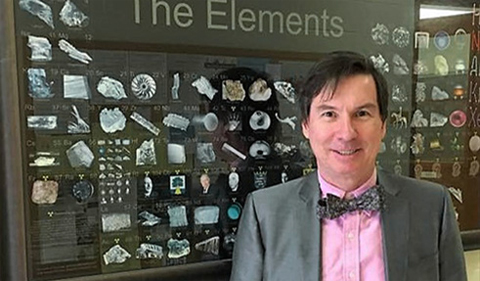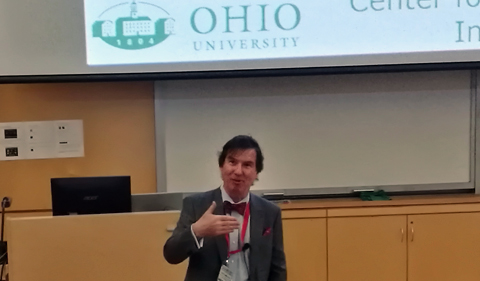Dr. Peter Harrington and graduate student Zewei Chen published a paper on “Self-Optimizing Support Vector Elastic Net” in Analytical Chemistry.
“This algorithm allows one to build classification and calibration models automatically while simultaneously avoiding overfitting and using a minimum number of variables to yield the best predictive results,” says Harrington.
Harrington is professor of Chemistry & Biochemistry at Ohio University.
Abstract: Chemometrics is widely used to solve various quantitative and qualitative problems in analytical chemistry. A self-optimizing chemometrics method facilitates scientists to exploit the advantages of chemometrics. In this report, a parameter-free support vector elastic net that self-optimizes two key regularization constants, i.e., λ for L2 regularization and t for L1 regularization, is developed and referred to as self-optimizing support vector elastic net (SOSVEN). Response surface modeling (RSM) and bootstrapped Latin partitions (BLPs) are incorporated for the optimization. Responses at a set of design points over the ranges of the two factors are evaluated with an internal BLP validation using a calibration set. A 2–dimensional interpolation with a cubic spline fits a response surface to determine the best condition that gives the best-estimated response. The SOSVEN with RSM had comparable performances with the one tuned by grid search, while the RSM is more efficient. The developed SOSVEN was compared with two parameter-free chemometrics methods, super partial least-squares regression (sPLSR) and super support vector regression (sSVR) for calibration, and sPLS-discriminant analysis (sPLS–DA) and support vector classification (SVC) for classification. For calibration, the SOSVEN with RSM worked equivalently well or better than the other two self-optimizing methods for the evaluations using meat and hemp oil data sets. For classification, a reference wine data set and mass spectra of different marijuana extracts were used. The three classifiers had similar performances to identify the cultivars of wines with nearly 98% of accuracy. The SOSVEN significantly outperformed sPLS-DA and SVC to classify the mass spectra of marijuana extracts with an overall accuracy of 97%. These results demonstrated excellent abilities of SOSVEN for classification and calibration.



















Comments